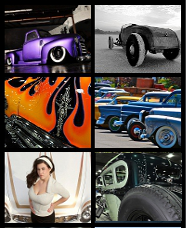Rally Racing: The Toughest Motor Sport in the World
The Oregon Rally and an Intro to Rallying
At the beginning of the automotive era, all auto races were rallies – dedicated race tracks simply didn’t exist, and paved roads were rare outside of cities. So the only way to race cars was to start at Point A and race to Point B. That’s what they did in 1894 – the challenge was to get yourself and your car from Paris to Rouen – a distance of some 79 miles. The winning car made it in 6 hours and 48 minutes – 3 hours and 30 minutes ahead of second place. That made the average speed about 11 miles per hour.
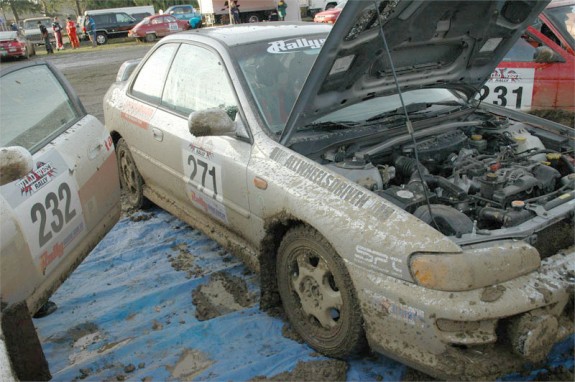
But there it was – an auto race that used unpaved roads to get from one place to another. Almost 117 years later, the Oregon Trail Rally happened May 13-15 weekend at Portland International Raceway and on roads up in the Columbia Gorge near The Dalles. The cars are a little bit faster, but the fundamentals of the race are the same – get your car, driver, and navigator from one place to another as fast as you can!
I was entered in the rally as the co-driver (navigator) of car #33 – a 1982 Alfa-Romeo GTV6 owned and driven by Austen Angell of Portland. While the Alfa is an unusual choice in the modern era of all wheel drive Subaru and Mitsubishi sport compacts, the Alfa GTV6 has a tremendous history in the World Rally Championship and was a leading rally car in its day.
Rally Racing Today
The field at the Oregon Trail Rally was a good mix of the national factory-supported rally teams and local talent. Traveling teams like David Higgins and Dave Mirra of Subaru Rally Team USA, Andrew Comrie-Picard of Canada racing on Scion sponsorship, and Dillon Van Way in the new Ford Fiesta lead the rally and turn out the fans. The local talent fills out the grid and offers the fans a more attainable aspiration.
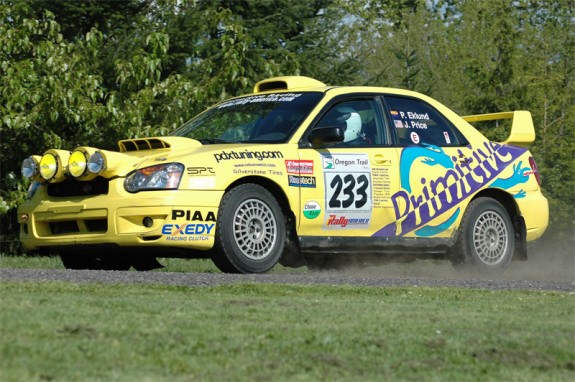
One of the features that makes the Oregon Trail Rally stand out is the Friday night spectator extravaganza at Portland International Raceway – the rally cars burn up the access roads and the motocross course within the facility in one of the few super special rally racing events held inside the limits of a major U.S. city. Bringing rally to the fans works well for both the organizers and the teams. Energy drink companies are heavily represented in Rally, and booths dispense all the free Viso, Rockstar, and Monster drinks you can stomach.
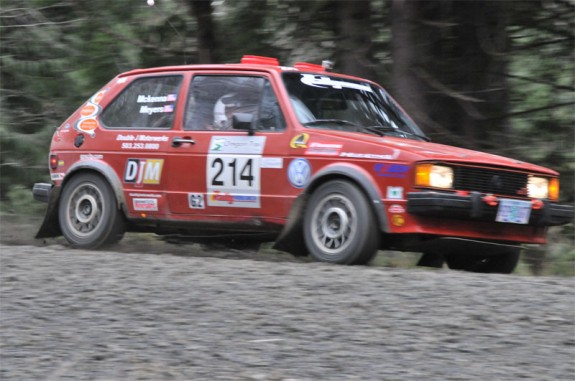
Volkswagon Rally Car
The appeal of Rally is easy to understand – the cars are familiar street-legal models, popular in the youth market. The field is filled with the Subaru Impreza WRX and STI, Mitsubishi Lancer Evolution, and popular low-budget rally cars such as the Volkswagen Golf. There are no exotic winged open wheel vehicles here – just pumped-up versions of the models the fans drive every day. On top of that, the Rally driving style is full of sideways slides, air-catching jumps, and the whine and chirp of turbochargers at full boost. Rally is tailor mode for spectators, except that most of the action takes place out in the woods somewhere.
What You Really Need To Know
But hot-dogging in front of spectators isn’t what draws most competitors into Rally. The fact of the matter is that Rally racing is the toughest auto racing there is, and the challenge and exhilaration of tough speed draws people into the sport. Here’s the down-low:

1) Rally racing is expensive. At the top end, teams are spending $250,000+ on a car, and even at the cheap end of the sport, the cost in tires, repairs, and damage far exceeds the purchase price of the car. Plus, a rally car is good for maybe 20 races before it’s hopelessly worn out – and I’m talking about the chassis here. Seams pop, welds rip, and suspension mounts get pounded out of shape in just a few races. Tires are good for an event or two.
2) Up to half of competitors fail to finish each event. Cars don’t like to be beaten up, but that’s the name of the game in Rally. Broken suspension arms, shattered wheels, and exploded engines are a common occurrence in Rally – and that doesn’t even count the cars that crash.
3) You’re not racing on some safety-engineered race course. The slogan they use in Rally is “Real cars, real roads, real fast.” You’re racing on a dirt or gravel road out in the middle of nowhere. The trees come right to the roadside and that dropoff on the outside of the corner is steep and rocky. You don’t get to spin safely off into the grass and drive back on to the race track in Rally.
4) Rallies happen all over the continent. If you want to follow the Rally America series, you’ll be making trips to Minnesota, Pennsylvania, Oregon, Washington, Maine, Missouri, and to southern California if you qualify for the X Games. If you choose the NASA series you can opt for the southeast or the southwest, and if you include the Canadian series (CARS) and shoot for the international North American title, you’ll be spending time up north from British Columbia to Quebec.
5) Rally drivers have to be the best. Your average Rally driver has to be comfortable in a full four-wheel drift, pitching the car sideways to bleed off speed, jumping, dodging, and generally driving at top speed in an environment with extremely limited traction and no room for error. Additionally, the driver and co-driver have to be able to fix the car in the field beside the road, and keep track of all their timing and scoring materials. The co-driver must read and the driver must understand a complex code that accurately describes the road coming up ahead. Rally drivers need to know if there’s a sharp corner just over that crest they’re approaching at 100 miles per hour!
So if you’ve been complaining about the costs in drag racing, vintage auto racing, or keeping your circle track car in the game, count your blessings.
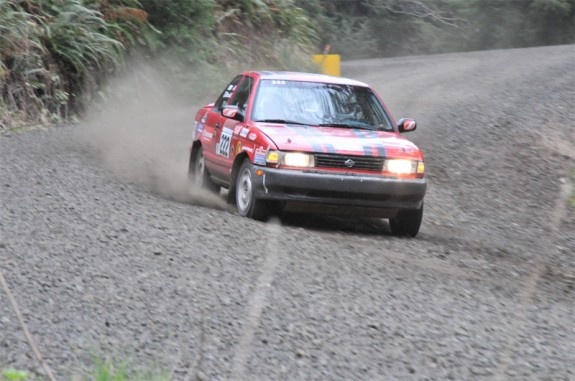
Nissan Rally Car
Oh, and my weekend in the Alfa at Oregon Trail? We soldiered through a flat tire, overheating, and torrential rains, but when we ran over a boulder and whacked the underside of the car hard enough to break the skid plate, pull the rear shocks clean out of their sockets, and drop the transmission onto the ground at 80 MPH, our weekend was done. How’s that for tough racing?
